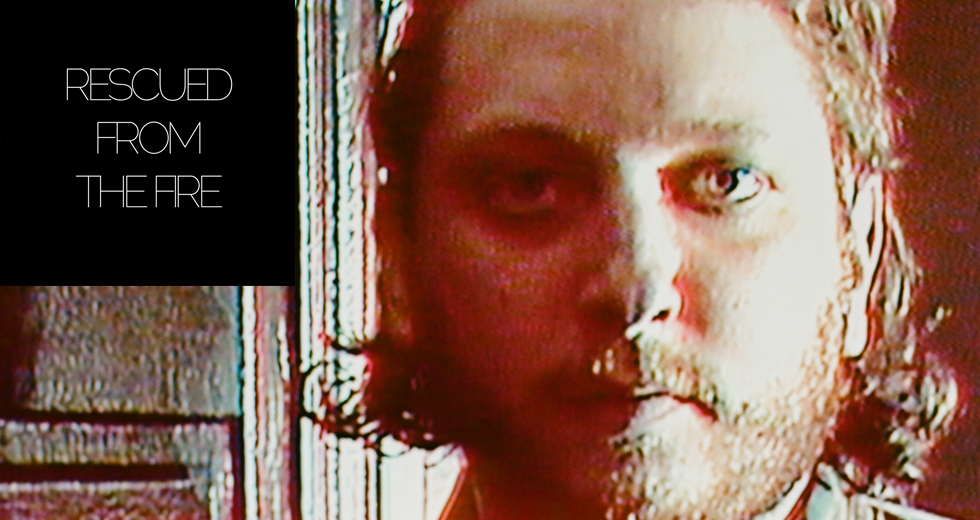Slowness
Robert Barry muses on the pleasures of taking things down a notch

You can find anything on SoundCloud. The demos of a million garage rock bands that would otherwise never have left their garages. The microrhythmic shuffling and twitching of thousands upon thousands of red-eyed laptop-wielding algoravers. And a surprisingly large number of tracks at least purporting to consist of nothing more than the slowed-down stridulations of a massed orchestra of common crickets.
There are 28 of those at last count, by the way. Featuring in 11 different playlists, with the most popular racking up some seven-and-a-half million plays. Unlike most memes, this one is surprisingly easy to source. In the early ’90s, a former country musician named Jim Wilson collaborated with Robbie Robertson (formerly of The Band) on a soundtrack for the TBS documentary series The Native Americans. Released as an LP in 1994, the final track on Music for the Native Americans is a Wilson composition with spoken vocals by Robertson. Tucked behind his slightly corny spiritualist patter, you can hear a sound like a seraphic choir singing in perfect diatonic harmony along with fleeting, echo-drenched bursts of cricket song. Nearly 20 years later, an edit of the track (minus the voiceover) suddenly started turning up all over the place – science blogs, Classic FM, The Huffington Post and all over Facebook – right around the end of 2013.
As far as I can gather, this sound really is produced from various cricket sounds slowed to different speeds. It’s not the case, as many of its online instantiations imply, that crickets really are miraculously singing in Western harmony if you can just scale your ears to their peculiar biorhythms. Rather, the different pitches are created by slowing the tape to different speeds and cutting them together, like old BBC Radiophonic Workshop stuff made out of tiny snips from tape recordings of cutlery and pinged lampshades. It’s skillfully done and very pretty, but no divine miracle.
The questions remain, though: Why did it suddenly start popping up everywhere, almost two decades after its original release? And why did so many people apparently believe that this “natural” choir had required no greater manipulation than a single shift of speed to produce such a pleasing sequence of perfect fifths and plagal cadences?
The answer, I suspect, comes down to someone stepping into ground prepped by another popular meme that had already been doing the rounds for a few years by then. That one had started with a post on Reddit with a link to a YouTube clip reducing Justin Bieber’s “U Smile” to an aching, symphonic crawl, 800% short of its original tempo. Before long, people were posting similarly sedated takes of Carly Rae Jepsen’s “Call Me Maybe,” Katy Perry’s “Firework” and the theme tune to Eastenders. More and more came along, all of them quaking with newfound grandeur, each one sounding more vast and oceanic than the last.
Part of the joy seemed to be in taking something trivial and stretching it until it sounded like the kind of blissed-out ambient driftworks beloved by “proper” music heads. There was always a note of snobbism in the phenomenon, one that bubbled up to the surface with Gizmodo’s post about the altered Bieber track. “You totally hate Justin Bieber, right?” it began, with all the presumption of a playground bully. “That’s just because you haven’t listened to Bieber slowed down 800 percent.” But behind all that, there was also the sheer aural pleasure of manipulating sound to extremes – a pleasure once largely restricted to studio engineers and electronic composers, now democratised by the sudden availability of free, open-source time-stretch software.
In the same year that eager Redditors took to dosing pop tunes with sonic secobarbitol, Hans Zimmer soundtracked the dreamworlds of Christopher Nolan’s film Inception with a souped-up, varispeed take on Edith Piaf’s “Non, Je Ne Regrette Rien.” In the film, the strident trombones of Charles Dumont’s original composition become thunderously epic and pregnant with menace, perfectly suggestive of the embedded reveries of Nolan’s subconscious-diving “extractors.” It sounded like the song itself was dreaming.
Between the torpid miasmas of strung-out pop hits and Nolan’s re-orchestrations of a slo-mo Piaf, an idea was planted that as a track’s tempo came down, new acoustic territories could open up. Hidden magic was revealed between the notes. Then Jim Wilson’s crickets turned up online and the whole meme up and jumped the shark. To the casual observer, this fascination with slowness may have seemed like a temporary blip that had come to a merciful end, but in reality, people have been finding new worlds in slow music since long before the advent of London coder Paul Nasca’s Paulstretch plug-in.
Changing the speed of someone else’s song takes active listening to a whole new level.
Extreme slowness, whether an intended attribute of a composition or one later induced by an app-happy audience, creates a soundworld that you, as a listener, can step into and inhabit. Details, otherwise obscure, come alive. Think of a Morton Feldman piano piece or the space between syllables in Leonard Cohen’s “Suzanne.” You can take each note and view it from all sides, weigh it up and feel it very intimately before moving on to the next. It’s an active relationship in that sense. You can’t help but anticipate – or even long for – the next note that seems to hang just out of reach. The relationship between performer and listener changes radically, as it takes great trust on both sides to spend so much time with each note. Changing the speed of someone else’s song, however, takes active listening to a whole new level.
In a new book, New York Times music critic Ben Ratliff recalls a friend in the mid-’90s who would make mixtapes compiling his favourite 45 records played with the turntable set to 33 RPM. “What worked?” asks Ratliff. “So much. It was as if hidden powers seeped out of the songs, as cooking bones in liquid brings out the marrow, making the animal transform after its death. It’s a process that brings the essence to the surface.”
Sucked back to 50 BPM, Ratliff recalls the sound of Ritchie Valens singing “Donna” as being like “someone fighting to sing, as if there is something at stake, a catatonia to overcome.” The Jackson 5’s “Would Ya Would Ya Baby,” in shifting from 45 to 33, changes from “solid groove Detroit” to “New Orleans wormwood.” Pete Drake’s “Are You Sincere” transforms into a “wah-wah effect that forms words.” In each case, reality is warped, emotions weirdly intensified.
Ratliff’s book Every Song Ever consists of 20 chapters, each one offering a different “way to listen to music,” a different door to new kinds of appreciation, from concentrating attention on “space” or “density” to the amassing of completist collections or the joining of exclusive clubs and cliques. It’s a book by a true connoisseur who has the writing skills to invite a wide audience to share in the great and diverse pleasures he’s found in his own connoisseurship. Still, my favourite chapter is the one about slowness. It’s only here that the listener really gets to fuck with the intentions and the products of other artists’ creativity, in the process becoming creative practitioners in their own right.
In the age of turntables and tape decks, changing the speed of a track was the one experimental technique that was always available to everyone, and would often be discovered by accident. You couldn’t make the kind of extreme, open adjustments that modern software would allow, but you could do something, make two records out of one, and make something your own, no matter how fleetingly.
I remember when I first started getting into techno some years back, I didn’t know a lot about it, but I loved the sound of the records. There was one particular 12-inch – possibly an early Matthew Dear record on Ghostly International, though I wouldn’t swear to it – that, without any indication for the playing speed on the sleeve, I always played at 33 RPM. DJing the track between bands at a gig one day, someone pointed out to me that this was the wrong speed. But once I got over the initial embarrassment, I still persisted in playing it slow. That was my version of the song. The way I liked it. Who cares how the artist intended it?
Last spring, I was grateful to be invited to the Maerzmusik festival in Berlin. For the last weekend of the festival, a power station in the former East housed a concert called The Long Now. It started early evening on Saturday and carried on, unbroken, until midnight on Sunday. Along the way we heard a five-hour string quartet by Morton Feldman, seven hours of microtonal drones by Phil Niblock, and long, slow sets of dark ambient electronics by Thomas Köner and Mika Vainio.
Listening to very slow music, you become very aware of your own body.
But in a room to the side of the main concert hall, the power station’s former control room played host to Leif Inge’s “9 Beet Stretch,” a version of Ludwig van Beethoven’s Ninth Symphony distended to a duration of 24 hours. So extended, all of the pomp and bluster of Beethoven’s original just evaporated. It could easily be mistaken for an algorithmically produced generative composition, constantly shifting but not really going anywhere. The sound became less a vector, from point to point, and more a property of the room itself, something that people could inhabit and soak in. Quite a few people slept in that room that night.
Listening to very slow music, you become very aware of your own body. Slow music can often be kind of sensual, erotic even (think of dancing to “a slow”). On the other hand, as Ben Ratliff points out in Every Song Ever, the moment when slowness really became a thing in music, when, in the early ’90s, it birthed its own specific genres – like R&B slow jams, g-funk and doom metal – just happens to have coincided with a massive increase in the strength of cannabis for sale on the street. Like being stoned, slowness is very rarely about necessity. It’s about luxuriating, wallowing, basking in sound. Dive in. Don’t hold your breath.

